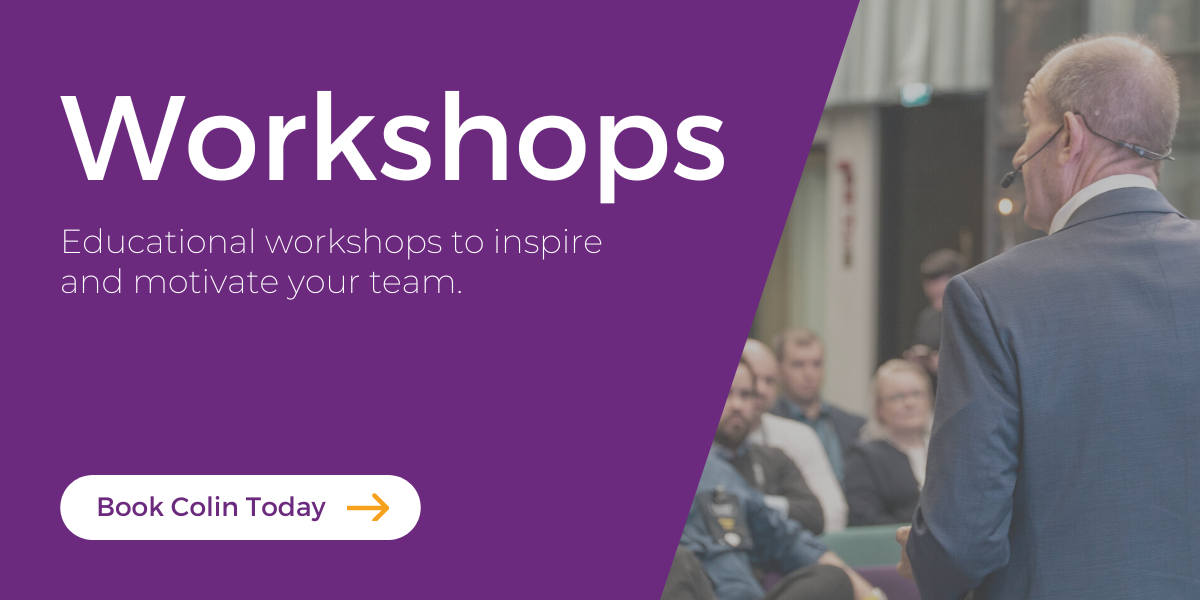The Magic Castle Hotel made the top ten of all Los Angeles hotels on Trip Advisor. The reason why would probably surprise you, but it’s one of those little secrets about why customers buy that they don’t tell you.
You would not be impressed if I showed you pictures of this hotel. It looks to me like an old apartment complex that was painted yellow and converted into a hotel. So, by the looks of it, at least, it’s nothing special.
However, the consumer reviews of this hotel are off the charts. People love it. Why? Most of the positive comments are about service. What is fascinating is that when people get specific about what they love about their stay, the trivial things are what make them rave.
Watch Colin talking about this on YouTube:
Subscribe to our YouTube channel here to see all the latest videos!
For example, the hotel has a pool in the courtyard. Next to the pool is a red phone, and above it is a sign that reads, “Popsicle Hotline.” So, if you are a kid swimming in the pool, you can get out, pick up the phone, order a popsicle, and then an employee will appear (like a white glove service) with a popsicle.
It is essential to mention that the popsicle isn’t anything special. It’s the standard one you would get at the store; a low-end, high fructose corn syrup variety that’s never even seen the fruit it claims to be flavored by. However, the idea of sending it to the pool via hotline, no less, makes it a surprise and delight to these kids and their families. Hence, the great reviews and high ranking on the list.
This experience is an excellent example of the topic I want to cover today: the disproportionate effect that small things can have on a Customer Experience.
The significance of small details in an experience is often overlooked. Lots of organizations fix the big things that go wrong in an experience. But, unfortunately, fine-tuning what could go right with the small stuff doesn’t get the same attention from them.
These details in the small things are critical, though. For example, consider the following that some experiences feature:
- Going into a courier center where someone has fresh flowers in the store, which is what you smell as soon as you enter
- Seeing that folded V on the toilet paper when you first enter your hotel room signaling that the housekeeping team serviced the space
- The cruise staff making little animals out of your towels, so when you come back in the evening, there is a surprise critter waiting for you
- The smell of vanilla wafting through the rooms of a home you want to buy when you enter the open house
- The expectation created by a restaurant with linen tablecloths and napkins
These little nudges (thank you, Richard Thaler) evoke emotional responses. People think about these little things, like the smell of flowers or the clean, crisp appearance of white tablecloths, and use them to make decisions. However, if you ask them about it, they might not be able to articulate them to you.
Before we go any further with this concept, there is a caveat. If you want the opportunities for small things to create a lot of value, you must be sure that the rest of your experience is excellent. Well-planned and executed small things do not trick customers into thinking something is better than it is; they are an enhancement of what was already good.
For example, having a folded V in your toilet paper wouldn’t impress you if the rest of the hotel had broken windows, and upon check-in, you learned there was an extra fee for guests that wanted clean bedding. So, if you’re looking for small things that’ll make a big difference and you’re not getting the basics right, focus on the basics first.
Small Things Can Change Behavior, Too
Small things work in the other way, too. For example, several years ago in the UK, there was an increasing awareness about the damage to the Earth’s environment that plastic bags created. Therefore, the government had shops charge customers for giving them plastic bags for their purchases. It was a nominal fee of £0.05, around $0.08. Nevertheless, the “taxing” of plastic bags reduced customers’ use by 85 percent.
Of course, there was probably a combination of things happening here, too. For instance:
- Some people objected to the extra charge, however nominal, and decided they would instead go without one.
- Some people bought “lifetime” bags to replace disposable ones.
- Some people thought they shouldn’t fill the ocean with plastic bags, so they brought their own.
In this case, the third point was a lot of the reason for the change. The realization of those bags’ negative impact on the Earth was significant to many customers. My optimistic side says that people mostly wanted to do the “right” thing here. They realized their habit of not bringing bags was problematic, so they tried to change that inertia and modify their behavior. In this case, the fee for the bag was a reminder to make that change for many of them.
Therefore, if you want to enable change, you need to get people to believe in the change that you’re making. It’s also never one thing. It’s the combination of all those factors coming together that facilitate change.
So, as you’re thinking about this in your own business, consider whether there will be resistance to the change you want to make. If so, then a tiny nudge might not work on its own. However, if people are already leaning this way and resistance will be low, then maybe the little nudge will work to change behavior.

Finding The Hidden Things Your Customers Want
So, how do you know what your customers want from you? Is it based on their past purchases? Their survey responses? Their Yelp reviews? These sources have value, but maybe not as much weight as you think.
Judging quality is a subjective thing. It can be difficult to compare items without expert-level knowledge about the field. Many people use shortcuts in their thinking to make quality judgments. Then, if you ask them about it, they forget all about that shortcut and tell you something different. Sometimes, they tell you what they think you want to hear or something they aren’t embarrassed to admit. So, what they say on a survey or Yelp review is suspect at some level, because of these biases.
Past purchase is a good indicator. But it isn’t enough on its own. For example, you can have a customer who buys from you a lot but doesn’t see value in your offer. On the other hand, there is a chance that they keep buying from you because they haven’t bothered to cancel their subscription, or they aren’t aware they are doing it and buy from you unconsciously out of habit. Neither of these purchase motivations portends loyalty or customer retention based on the value you provide.
The best way to determine what motivates people is to test them. First, find out where their levels of perception are. We do research called the Emotional Signature®, which identifies those hidden things that people are making judgments on when making buying decisions.
So, as you have heard me say before, what customers tell you and what they do or buy can be very different. So the Emotional Signature identifies these small things that drive value, these nudges.
So, What Should You DO About the Small Things?
Taking care of the small details or using small nudges to change customer behavior is essential to designing your experience. Knowing what will matter most is a significant part of your customer strategy.

Some practical things you can do to leverage these small things are to:
- Don’t stop at neutral. Nobody remembers a neutral experience. So, if you bring them back to neutral, that’s not enough. It would help if you got all the basics right, checked all those boxes first, and added some small things that delight people.
- Determine which way the wind is blowing. If your customers are dead set against something, you won’t nudge them into that. So, don’t try. First, convince them they want this thing, then try a nudge. By contrast, if they’re already leaning in a direction, then that might be an opportunity to nudge them, surprise them or give them something they can’t get anywhere else.
- Focus on authentic sources of value. To focus on these sources, you have to know what they are. So, if you don’t know, find out. The Magic Castle Hotel in Los Angeles has such high reviews because they knew parents felt that making the experience at the hotel excellent for their kids is a significant source of value. Other segments might not have the same value. But they have one. It’s your job to figure out what that is.
- Don’t always focus on the negative. If you are always fixing problems, you can’t reach the point where you can present the positive. So, even as you are improving a broken part of the basics, find an inexpensive small thing you can do simultaneously that boosts the experience in a small area.
- Put yourself in the customers’ shoes. You have to walk that experience as a customer does, or you can miss some of the small things that are either broken or could be better. Having those moments personally will make it much easier to come up with small things you can fix for them.
So, there you have it. There are no tricks at The Magic Castle. Just some old-fashioned Customer Experience design and excellent experience delivery of the small stuff by the staff. What enchantments could the small moments in your experience deliver?

Colin has conducted numerous educational workshops to inspire and motivate your team. He prides himself on making this fun, humorous, and practical. Speak to Colin and find out more. Click here!


